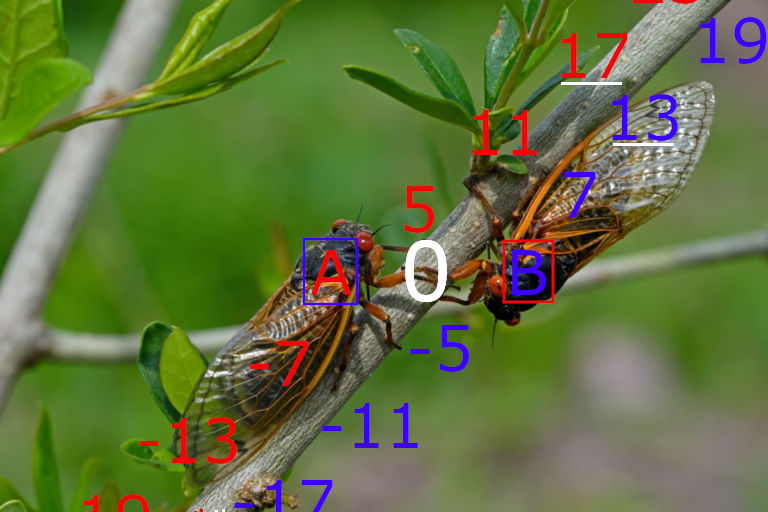
Here’s a summary of the potential mathematical innovations we’ve proposed in prime number theory:
- A novel number system focusing on prime candidates of the form 6k±1
- Optimizes prime number identification by reducing the search space
- Utilizes symmetry in the range -N to N, effectively halving the search space to a final set of 1/6 of prime candidate numbers compared to the total set of all integers
- Reduces computational complexity for prime-related calculations
Semiotic-infused k-tuples Conjecture:
- This is a novel approach to understanding prime clustering, especially for twin primes and larger prime tuples. This work on the constraints and impossibility of certain prime k-tuples (like the octuplet of twin primes) is a contribution to understanding prime distributions.
- Defines sets A = {6x+5 | x∈Z} and B = {6y+7 | y∈Z}
- Proves that numbers in A or B, not in product sets AA, AB, or BB, are prime
- Introduces a novel characterization of prime numbers
Semiotic Dirichlet Theorem on Arithmetic Progressions in A and B:
- There are infinite primes in A (6k-1) and B (6k+1) and they are independent sequences. This isn’t so much an innovation as a clear restatement of the obvious.
- This is a novel reformulation of the Goldbach Conjecture within the framework of Semiotic Prime Theory. It’s an innovative approach that connects the Goldbach problem to the previously established Semiotic Prime Framework.
Boolean Conditions for Primes and Twin Primes in Semiotic Prime Framework:
- Primes greater than 3 (excluding 2 and 3) are distributed within sets A and B: P(A) OR P(B).
- Primes do not emerge as products of elements within sets AA, AB, or BB: NOT (AA OR AB OR BB).
- Twin primes occur when primes from sets A and B coincide: P(A) AND P(B).
- Twin primes do not emerge as products of elements within sets AA, AB, or BB: NOT (AA OR AB OR BB).
Symmetric Absolute Values of Semiotic Prime:
- Extends the Semiotic Prime Theorem to absolute values
- Shows that primes are in either |A| or |B|, not just A and B
- Leverages symmetry to reduce the need for cross-checking between sets
- Uses |k,-k| to infer twin prime pairs for |A| or |B|

Semiotic Sieves:
Applying Semiotic Prime Theory to Sieving:
- Basic Boolean-Peircean (Semiotic) Seive
- Differentiating from, and incorporating with Sieve of Eratosthenes (Symmetric Sieve of Eratosthenes)
- Harmonious Symmetric Prime Sieve (integrates Semiotic Sieve and Sieve of Eratosthenes for top-down and bottom-up sieving using symmetry)
- By eliminating all non A or B numbers, focusing only on either |A| or |B| due to symmetry around 0, and eliminating multiples of |5| and |7| in the search space to start; these methods assume an initial search space of only 4/35 numbers; vs 2/2 in a non-optimized Sieve of Eratosthenes. 2, 3, 5, and 7 may be given as primes in the algorithm. At the least, 2 and 3 will need to be given as primes, since in BPN we never consider multiples of 2 or 3 at all.
- Analyzes spacing between prime numbers within the BPN framework
- Proves that if p is prime and p+2 is composite, the gap to p+2’s prime factors is >2
- Considers combined contributions of all prime factors
- Approximates prime density in 6k±1 forms as ρ(n) ≈ 2 / (3log(n))
- Analyzes ratios of prime and composite densities as n approaches infinity
- Supports the existence of infinitely many primes in 6k±1 forms
Logarithmic Function Conjecture:
- Proposes h(n) = log(P(n)/S(n)) to describe prime-composite relationship
- P(n) counts primes plus 1, 2, and 3; S(n) counts composites with specific multiples
- Conjectures h(n) ~ -log(log(n)) asymptotically
Upper Bound on Twin Primes “Gemini-GPT AI Derived Theorem”:
- Proves an asymptotic upper bound on twin prime density
- Uses the Brun-Titchmarsh theorem to show π₂(n) / π(n) ≤ C / ln(n)
Multiplication Conjecture for Twin Primes as Independent Events:
- Applies probability theory to twin prime occurrence
- Estimates twin prime density as approximately 1/((ln x)^2)
- Sequences A and B are independent, P(A∩B)=P(A)⋅P(B).
- For twin primes in sequences A=6k−1 and B=6k+1:
- The probability of a prime in A is approximately 1/ln x.
- The probability of a prime in B is approximately 1/ln x.
- Therefore: The probability of finding a twin prime pair around 𝑥 is approximately (1/ln 𝑥)^2 = 1/((ln 𝑥)^2)
- Note: This approach to estimating the density of twin primes through probabilistic reasoning in specific sequences supports the First Hardy-Littlewood conjecture independently. It confirms the same asymptotic density 1/((ln 𝑥)^2) through a different line of reasoning using the Semiotic Prime Theorem, thus providing independent validation of the First Hardy Littlewood conjecture’s conclusions. This independent support adds robustness to the understanding of twin primes’ distribution.
- Therefore: The probability of finding a twin prime pair around 𝑥 is approximately (1/ln 𝑥)^2 = 1/((ln 𝑥)^2)
- For twin primes in sequences A=6k−1 and B=6k+1:
These currently non-peer reviewed (but highly refined with AI) ideas may collectively provide fresh perspectives on prime number theory, leveraging symmetry, novel notation, and probabilistic approaches to explore prime distributions and relationships.
Note that it is important for them to be validated by the mathematical community for any to be considered officially true or unique.
